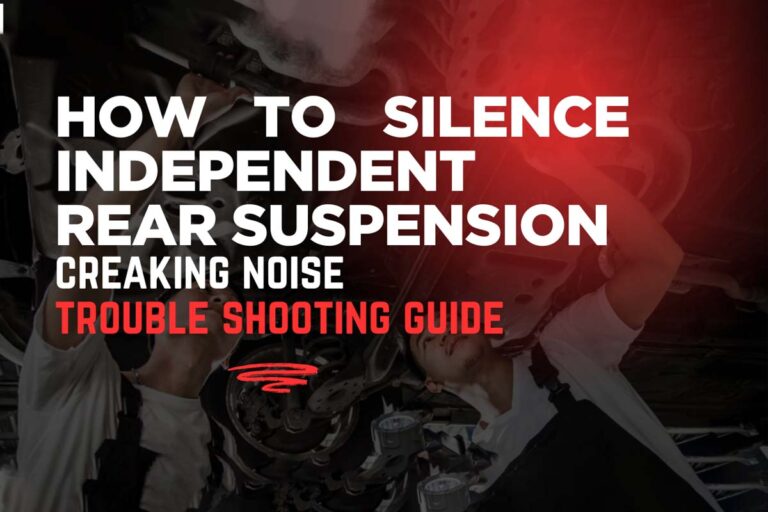How to Diagnose Automotive Fluid Leaks: Engine Oil, Coolant & Transmission
When you discover low fluid levels in your vehicle, knowing where to look for leaks can save you time, money, and prevent catastrophic engine damage. This comprehensive guide walks you through diagnosing the three most critical automotive fluid leaks: engine oil, coolant, and transmission fluid.
Understanding Fluid Loss: Normal vs. Problematic
Before panicking about fluid loss, it’s important to understand that some fluid consumption is normal. Modern engines typically go 5,000-7,000 miles between oil changes, and slight oil consumption during this interval is expected. However, finding no oil on your dipstick when checking on a flat, level surface indicates a serious problem requiring immediate attention.
Engine Oil Leak Detection and Diagnosis
Checking Your Oil Level Properly
Always check your engine oil on a flat, level surface with the engine off and cooled down for at least 10 minutes. If your dipstick shows low or no oil, you’re dealing with either excessive consumption or a leak that needs immediate diagnosis.
Internal Oil Leaks: Recognizing the Signs
Internal engine oil leaks occur when oil enters the combustion chamber and burns during operation. The most obvious symptom is blue smoke coming from your tailpipe, indicating oil is burning inside your engine cylinders.
Common causes of internal oil leaks include:
Worn Valve Seals and Piston Rings Higher mileage vehicles often develop worn seals that allow oil to seep into combustion chambers. This is particularly common in engines with over 100,000 miles.
Intake Gasket Seal Failure When intake gaskets fail, engine oil can leak internally, mixing with the air-fuel mixture and creating blue exhaust smoke.
VVT Solenoid Issues: Modern vehicles with Variable Valve Timing systems can experience timing problems when oil levels drop too low, potentially causing expensive engine damage.
External Oil Leaks: Common Problem Areas
External oil leaks are often easier to diagnose but can create safety hazards if oil contacts hot exhaust components, creating smoke and burning odors.
Valve Cover Gaskets: Located at the top of your engine, valve cover gaskets are among the most common leak sources. V6 and V8 engines have two valve covers, each requiring a gasket. When these gaskets fail, oil drips onto hot exhaust manifolds, creating smoke and odors. Fortunately, valve cover gaskets are typically easy to replace and relatively inexpensive.
Oil Pan Gasket: The oil pan gasket seals the oil pan to the bottom of your engine block. When this gasket fails, you’ll typically find oil puddles on the ground beneath your parked vehicle. While these leaks rarely cause immediate smoking (unless oil contacts the exhaust system), they can lead to rapid oil loss.
Crankshaft Seals: The front crankshaft seal (near the crank pulley) and rear main seal (behind the engine) can leak oil. The rear main seal is particularly problematic because accessing it often requires engine or transmission removal.
Consequences of Ignoring Oil Leaks
Oil leaks, whether internal or external, can cause cascading problems throughout your vehicle:
- Catalytic Converter Damage: Burning oil can clog your catalytic converter, leading to expensive repairs
- O2 Sensor Failure: Oil contamination can damage oxygen sensors, triggering check engine lights
- Engine Timing Problems: Low oil levels affect VVT systems, potentially causing timing chain damage
- Complete Engine Failure: Severe oil loss can lead to engine seizure and total replacement
Coolant System Leak Diagnosis
Understanding Your Cooling System
Your vehicle’s cooling system maintains optimal engine temperature through a complex network of components. The water pump circulates coolant throughout the system, while the thermostat regulates flow based on engine temperature. When cold, the thermostat remains closed, allowing the engine to warm up quickly. Once at operating temperature, it opens to allow coolant circulation through the radiator.
Recognizing Coolant Leak Symptoms
Several warning signs indicate potential coolant leaks:
Engine Overheating: Dashboard warning lights or temperature gauges reading in the red zone indicate cooling system problems.
No Heat from Vents: If your heater blows air but no warm air, coolant may not be circulating through the heater core, often indicating low coolant levels or air bubbles in the system.
Temperature Fluctuations: Erratic temperature readings often indicate air pockets in the cooling system caused by coolant loss.
External Coolant Leak Sources
Radiator Cap: The radiator cap maintains system pressure and often fails first. A bad radiator cap has a small weep hole that allows coolant to escape. While this is an easy and inexpensive fix, always pressure test the entire cooling system when replacing a radiator cap to identify additional leaks.
Radiator Failure: Radiators commonly leak at the seams where metal/aluminum cores meet plastic end tanks. These gaskets deteriorate over time, causing visible leaks. When replacing a radiator, always install a new radiator cap simultaneously.
Hose Connections: Coolant hoses connecting various system components can develop leaks at connection points or split along their length due to age and pressure cycling.
Water Pump: Water pump leaks typically occur at the gasket where the pump mounts to the timing cover or engine block. These leaks often cause coolant to pool beneath the vehicle.
Thermostat Housing: The thermostat sits in a housing sealed with a gasket. When this gasket fails, coolant leaks from the housing connection point.
Internal Coolant Leaks: The Serious Threat
Internal coolant leaks are far more dangerous than external leaks because coolant can contaminate engine oil or enter combustion chambers.
Coolant in Oil: When coolant leaks into the oil system, it typically settles at the bottom of the oil pan due to its weight. The oil pickup tube draws coolant first, circulating it through the engine instead of lubricating oil. This causes rapid engine damage and potential seizure.
Head Gasket Failure: The most serious internal coolant leak involves head gasket failure, allowing coolant into combustion chambers. This creates thick white smoke from the tailpipe and can be diagnosed by examining spark plugs – cylinders with coolant leaks will have clean spark plugs while others remain dirty, as coolant acts as a detergent.
Transmission Fluid Leak Diagnosis
Recognizing Transmission Problems
Transmission issues often manifest as performance problems before you notice fluid leaks:
Slipping: Engine revs increase without corresponding vehicle acceleration, indicating loss of hydraulic pressure.
Shuddering: Vibrations during acceleration, especially on hills, suggest low fluid pressure affecting clutch engagement.
Whining Noises: Unusual sounds during acceleration can indicate pump cavitation due to low fluid levels.
Loss of Reverse: In severe cases, you may lose reverse gear functionality entirely.
Checking Transmission Fluid Properly
Most automatic transmissions require fluid level checks with the engine running and the vehicle on level ground. The transmission dipstick is typically located near the firewall in the engine compartment. Always follow your vehicle’s specific procedure, as some newer vehicles require special tools or procedures for fluid level checks.
Common Transmission Leak Sources
Transmission Cooler Lines: These metal lines carry fluid between the transmission and the cooler (often integrated into the radiator). Follow these lines from the radiator to the transmission, checking for rust, corrosion, or wet spots indicating leaks.
Gear Selector Shaft Seal: Where the gear selector connects to the transmission case, a seal prevents fluid loss. This area commonly leaks, with fluid being blown rearward while driving, making diagnosis challenging.
Transmission Pan Gasket: The transmission pan gasket seals the removable pan to the transmission case. When this gasket fails, you’ll see fluid puddles beneath the vehicle. If replacing this gasket, replace both the pan and gasket together for best results.
Additional Transmission Seals: Various other seals throughout the transmission can fail, including input/output shaft seals and valve body seals.
Diagnostic Best Practices
Safety First
Always diagnose fluid leaks with the vehicle on level ground and proper safety equipment. Never work under a vehicle supported only by a jack – use jack stands or drive-on ramps for safety.
Systematic Approach
- Identify the fluid type by color and consistency
- Locate the highest point of leakage – fluid runs downward, so the source is often higher than where you see it
- Clean the area before diagnosis to distinguish between old stains and active leaks
- Pressure test when possible to identify marginal leaks that only appear under operating conditions
- Address multiple issues simultaneously – if you’re replacing a radiator, replace the cap; if fixing a transmission pan gasket, replace the pan
Fluid Identification Guide
- Engine Oil: Black or brown, slippery texture
- Coolant: Usually green, orange, or red; sweet smell when hot
- Transmission Fluid: Red or brown, distinct petroleum odor
- Power Steering Fluid: Similar to transmission fluid but lighter color
- Brake Fluid: Clear to amber, feels slippery
When to Seek Professional Help
While many fluid leaks can be diagnosed and repaired by DIY mechanics, certain situations require professional attention:
- Internal engine or transmission leaks requiring major disassembly
- Head gasket replacement
- Transmission rebuilds
- Any leak you cannot safely access or diagnose
Preventive Maintenance Tips
Regular maintenance prevents most fluid leaks:
- Check fluid levels monthly on level ground
- Inspect for leaks during oil changes
- Replace gaskets and seals preventively during major service
- Use quality fluids meeting manufacturer specifications
- Address small leaks promptly before they become major problems
Cost Considerations
Understanding repair costs helps prioritize repairs:
| Repair Item | Estimated Cost |
|---|---|
| Valve cover gaskets | $100–300 per side |
| Oil pan gaskets | $200–500 depending on access |
| Radiator replacement | $300–800 including labor |
| Transmission pan gaskets | $150–300 |
| Head gasket replacement | $1,500–3,000+ |
Conclusion
Diagnosing automotive fluid leaks requires systematic investigation and understanding of how each system operates. Early detection and repair prevent minor issues from becoming major expenses. Whether dealing with engine oil, coolant, or transmission fluid leaks, the key is identifying the source quickly and addressing it before secondary damage occurs.
Remember that fluid leaks often indicate worn components throughout the system. When replacing gaskets or seals, inspect related components and consider preventive replacement of items with similar lifespans. This approach minimizes future problems and reduces overall repair costs.






